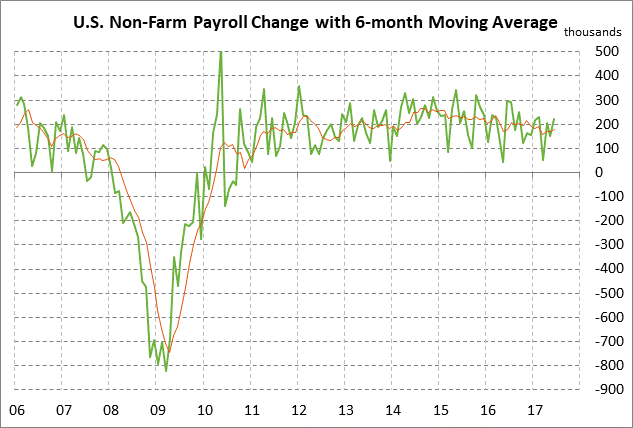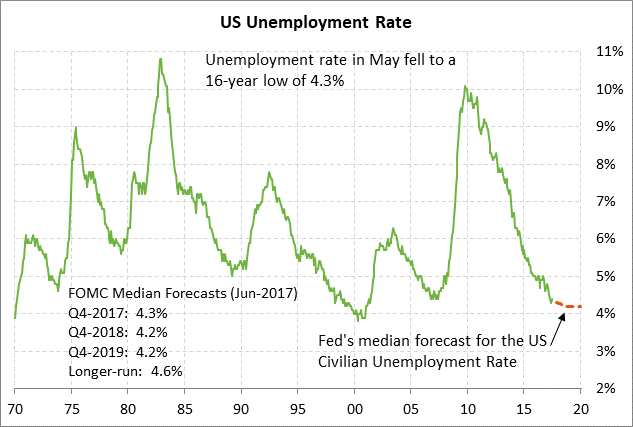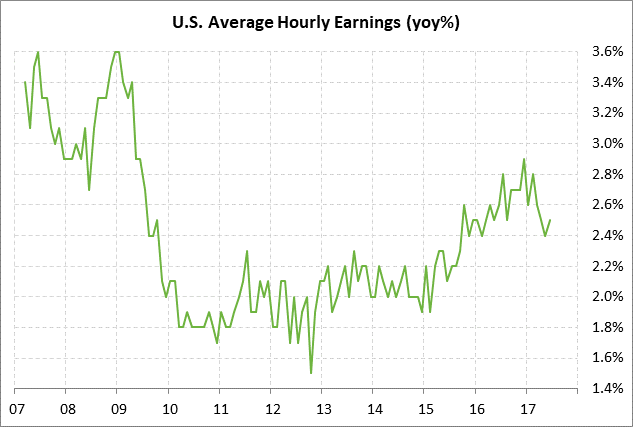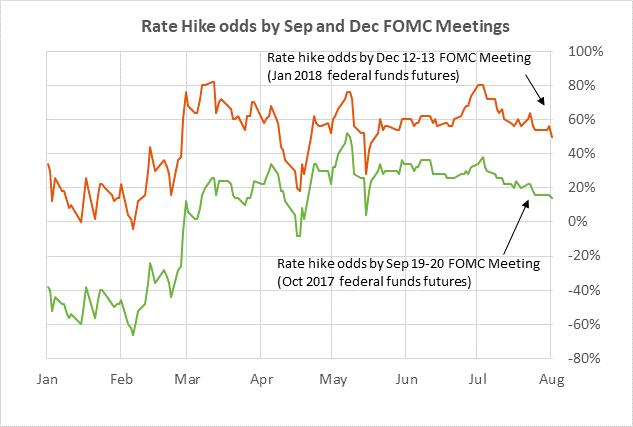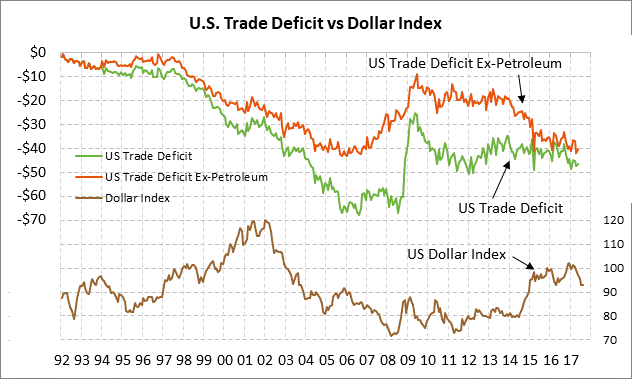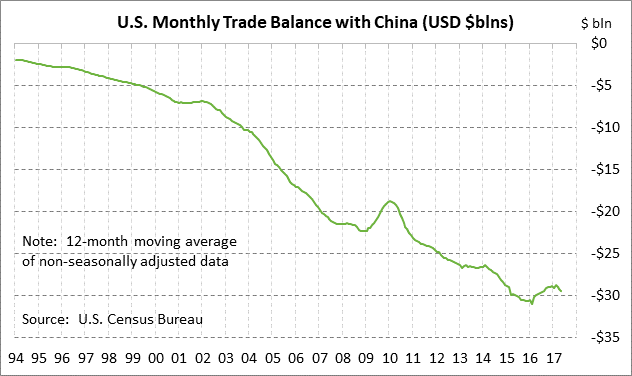- U.S. payroll report expected to show a continued firm labor market
- Outlook for Fed policy could shift due to today’s U.S. unemployment report
- U.S. trade deficit expected to narrow modestly
U.S. payroll report expected to show a continued firm labor market — The market consensus is for today’s July payroll report to show an increase of +180,000, which would exactly match the year-to-date average but would be down from June’s +222,000. Today’s payroll expectations were supported by Wednesday’s ADP report of +178,000, which was mildly below the consensus of +190,000 but close to Friday’s payroll consensus of +180,000. Payroll growth was shaky at +50,000 in March and +152,000 in May, but otherwise payrolls have been strong at more than +200,000 in the other months of this year.
Meanwhile, the consensus is for today’s July unemployment rate to fall by -0.1 point to 4.3%, thereby matching May’s 16-year low of 4.3%. That would leave the unemployment rate virtually right at the Fed’s forecast for a unemployment rate of +4.3% for late this year and 4.2% during 2018-19.
The Fed is expecting the unemployment rate over the next few years to run below its estimate of a longer-run natural unemployment rate of 4.6%. The Fed is therefore expecting a tight labor market where wages should be seeing upward pressure based on the traditional Phillips curve relationship. However, those wage gains have yet to emerge. The June U.S. average hourly earnings report of +2.5% y/y in fact was down from December’s 8-year high of +2.9%.
The market consensus is for today’s July average hourly earnings report to ease to +2.4% y/y from June’s +2.5%. A lower hourly earnings report today would cause more doubt at the Fed about the wage and inflation outlook and could cause the Fed to forego its last rate hike of the year.
Outlook for Fed policy could shift due to today’s U.S. unemployment report — As always, today’s unemployment report has the potential to shift market expectations for Fed policy. However, it would take a fairly large divergence from the consensus to produce a significant shift in the outlook for Fed policy. That is particularly the case since the Fed so far this year has consistently attributed any weak economic or inflation data to transitory factors and not to any fundamental shift in the outlook. The Fed believes that the U.S. economy is showing solid growth at present.
The market consensus continues to be that the FOMC at one of its next two meetings (Sep 19-20 or Oct 31/Nov 1) will announce the start date for its balance sheet normalization program. We suspect the Fed would like to begin the balance sheet drawdown on Oct 1 simply because that would keep the program synced up with the calendar quarters. The Fed has already said that the draw-down cap will start out at $10 billion per month and will then adjust higher by $10 billion every three months until it reaches a maximum cap of $50 billion per month.
However, an Oct 1 start might not be possible if Congress is in the middle of a debt limit fight or a government shutdown. Congress must pass new spending authority by Oct 1 to avoid a government shut-down and must pass a debt ceiling increase by early to mid-October to avoid a Treasury default.
Meanwhile, the odds for a rate hike at the next FOMC meeting on Sep 19-20 are very low at 12%. The odds then slowly increase to 34% by the Oct 31/Nov a meeting and 50% by the Dec 12-13 meeting.
U.S. trade deficit expected to narrow modestly — The market consensus is for today’s June U.S. trade deficit to narrow modestly to -$44.5 billion from May’s -$46.5 billion. The expected deficit of -$44.5 billion would be close to the 12-month trend average of -$44.3 billion.
The good news for the U.S. trade deficit is that exports in May rose by +0.4% to post a new 2-year high of $192.0 billion. Exports are being supported by stronger global economic growth and by the weaker dollar seen this year. However, U.S. imports also remain strong and were up by +6.6% y/y in June, stronger than the export increase of +5.4% y/y.
The U.S. trade deficit report has taken on significant political importance since the Trump administration considers trade deficits to be a measure of trade unfairness. The largest U.S. trade deficit by far is with China with a deficit of -$31.6 billion in May. The U.S. also has large trade deficits with Mexico (-$7.3 billion), Japan (-$5.8 billion) and Germany (-$5.0 billion). The U.S. has only a small -$1.5 billion trade deficit with Canada.
The wide U.S. trade deficit continues to be a bearish underlying factor for the dollar since about $1.2 billion worth of dollars flow overseas every calendar day. However, those excess dollars are a drop in the bucket for the FX markets, which trade an average of $5 trillion worth of currencies every day with 88% of that trade involving U.S. dollars, according to the BIS.

